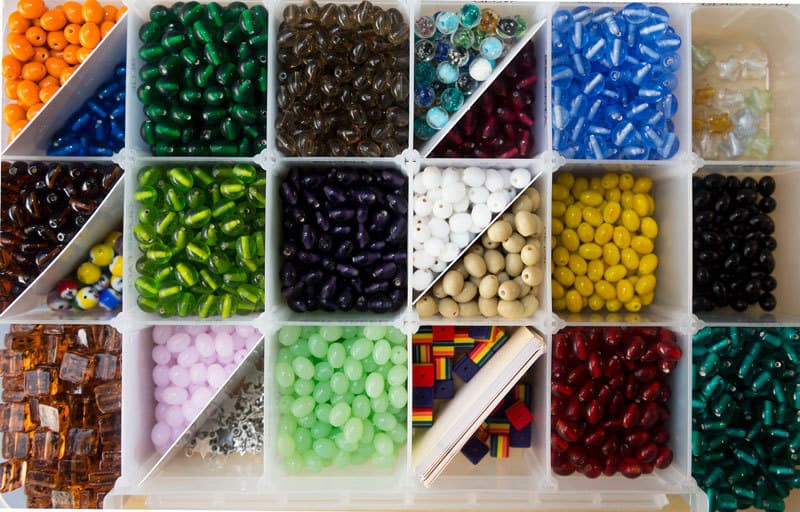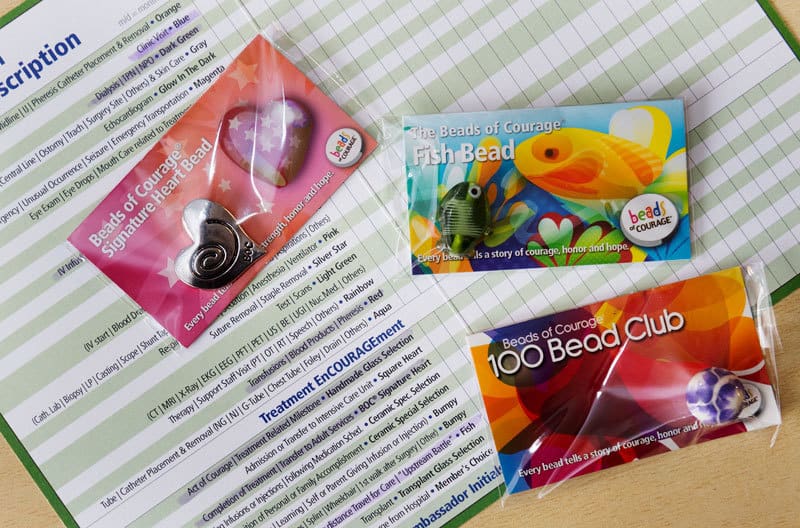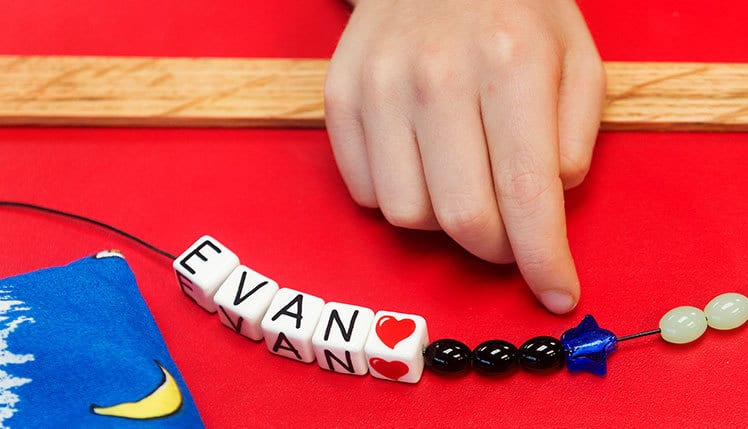Suffering is hard for a child to rationalize, and the skillset necessary for coping often comes with age. That’s why Jean Baruch founded Beads of Courage 11 years ago in Arizona, while working on her Ph.D. in nursing. Since then, the program has spread across the country.
The Beads of Courage program at the University of Missouri Women and Children’s Hospital is an Arts in Medicine program that bestows handcrafted beads to children battling long-term illnesses or injury. Arts in Medicine is a relatively new field, which in recent years has been integrated into hospitals as a way to provide comfort and therapy through art. More broadly, the field uses art — performance, expressive, visual and other forms — to enhance medical care and therapeutic treatment.

“The beads help the child to cope by adding meaning to the illness,” Lehman says. “They help them to communicate about their experiences at the hospital and give them a sense of self by providing a tangible way to tell their story to their healthy peers. It’s a way for them to take pride in their bravery. A child might say to a friend, ‘I don’t have any hair, but I will show you these beads that I got for having six blood draws in one week.’”
The beads also empower the parents, Lehman says. They give them an opportunity to turn everything around. They appreciate that everything their child goes through is recognized.
Childlife Specialist Christina Bezler, who has been with the hospital for two and a half years, believes in the power of the beads. “Often it’s the parents who tear up when they learn about them and see their child pick out the letters for their name when they are first enrolled. They are so grateful for something special that honors their child. As a health care provider, it’s easy for us to get used to routine procedures and the beads remind us that even the little victories are worth celebrating with our patients, and this is very good for the kids.”
So far, the response to the program has been overwhelmingly positive. The children get excited about all the colors of the beads, and before too long, they are keeping track of which beads are “owed” to them.
From a health care provider’s perspective, presenting a child with a Bead of Courage is a special moment. It’s a positive experience after a day of poking little arms, taking vitals and seeing to the physical well-being of their patients. It allows them to connect on an emotional level that usually brings smiles as their young patient adds to their strand.
Some strings of beads are several feet long, signifying the length and severity of the child’s battle. Bezler has seen strands as long as the length of a child’s bed, two or three times the child’s height, or even looped several times around an IV pole — each inch, a testament to bravery and endurance.
Each bead is symbolic of different treatments, milestones, surgeries or other difficult trials for a sick child. There are also discretionary beads that a nurse might bestow, like the fish bead that symbolizes swimming upstream or an acorn bead that represents strength. These beads are given after a particularly hard day at the hospital. They come with special cards letting the children know they are not alone; their bravery meant a lot that day and did not go unnoticed.

Locally, the Columbia Kiwanis Club provides funding for the Beads of Courage for chronically ill patients through its annual Harry
Potter Trivia Night. This event, hosted at Hickman High School, is attended by young and young-at-heart Potter fans. Children who are passionate about the heroic acts of Harry see their trivia night table fees help other children. They turn their galleons (wizard money) into beautiful beads for sick children.
The sixth annual Harry Potter Trivia Night is set for St. Patrick’s Day, 2018. For more information, visit www.harrypottertrivianight.com.



